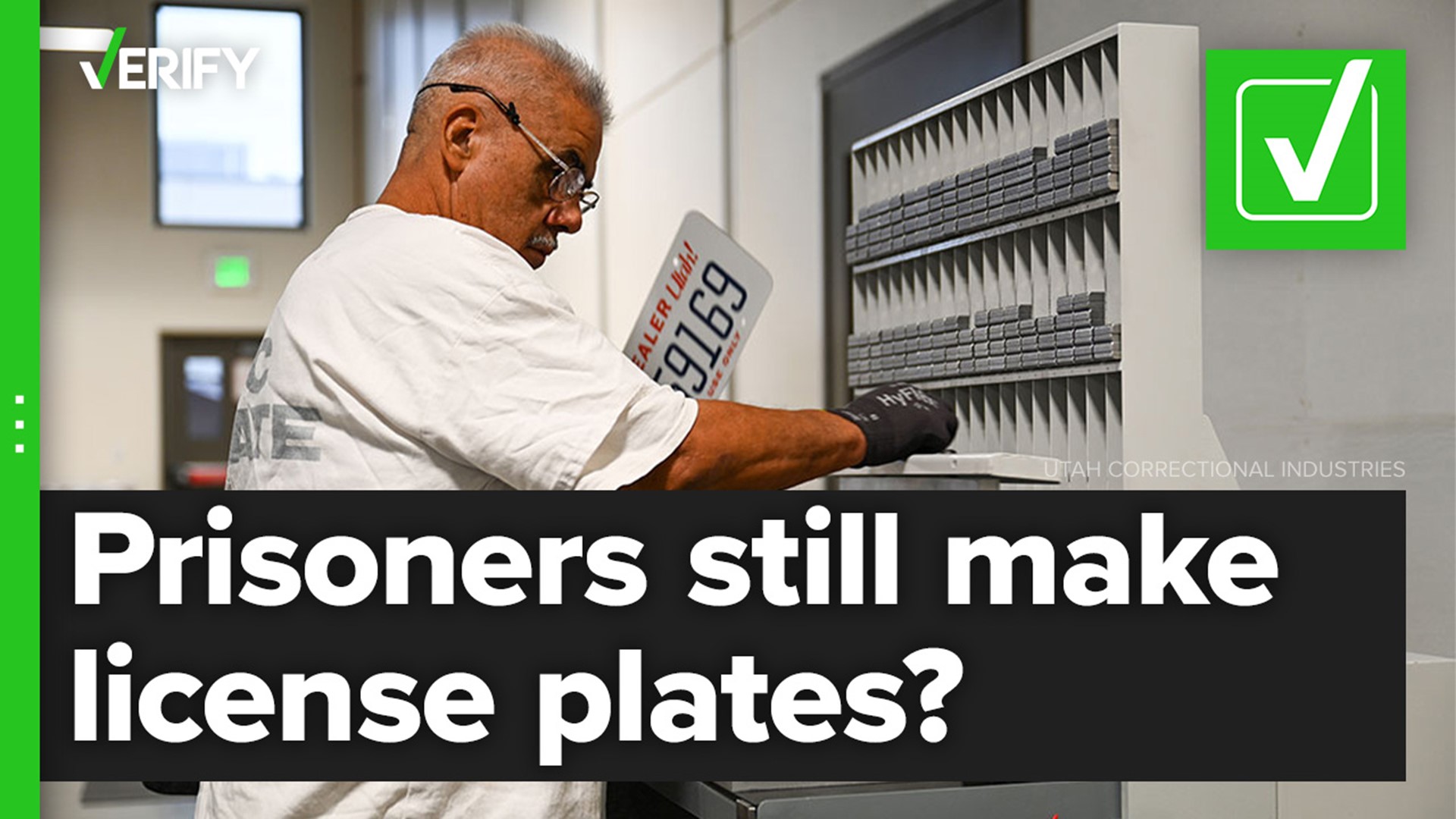Two out of three people incarcerated in state and federal prisons are also workers, the American Civil Liberties Union (ACLU) estimated in a June 2022 report.
Deb recently reached out to VERIFY with a question about incarcerated workers. She asked, “Do prisoners still make license plates?”
THE QUESTION
Do incarcerated workers still make license plates?
THE SOURCES
- The American Association of Motor Vehicle Administrators
- Jennifer Turner, human rights researcher in the American Civil Liberties Union (ACLU) Human Rights Program
- Corrections departments and prison industries programs in various U.S. states
THE ANSWER
Yes, incarcerated workers in many states still make license plates.
WHAT WE FOUND
License plates are “one of the most quintessential products” that incarcerated workers make, Jennifer Turner, a human rights researcher with the ACLU, said.
VERIFY reached out to the American Association of Motor Vehicle Administrators for data about how many license plates in the U.S. are made by incarcerated workers and in which states. Though the administration couldn’t provide conclusive data, a spokesperson said approximately half of states work with their corrections departments to produce license plates.
But that number is likely higher, according to Turner. She said incarcerated workers in around 37 states make all of their state’s license plates.
Incarcerated workers have been making license plates for decades, according to Turner.
“The first prison labor programs to produce license plates began in about 1920, and it stepped up in a lot of other states during the Great Depression when states turned to prisons to produce license plates,” she said.
Many state prison industries programs and corrections departments have information online about incarcerated workers making license plates.
MORE FROM VERIFY: Yes, some forms of slavery are still technically legal in most US states
One of these programs began in Michigan in 1918, when incarcerated workers at the state prison near the city of Jackson began producing license plates, along with street and road signs.
Inmates at California’s Folsom State Prison have manufactured license plates for the state’s Department of Motor Vehicles (DMV) since 1947, according to the California Prison Industry Authority (CALPIA). The agency says more than 100 inmates manufacture license plates every day at its Folsom Prison factory.
In some states, such as California, incarcerated workers produce more than 2 million license plates per year, Turner said.
Prison industries programs and corrections departments in nearly a dozen other states – Georgia, Tennessee, Ohio, Idaho, Nebraska, North Carolina, Minnesota, Iowa, Virginia, South Carolina and New York – also have information online about incarcerated workers making license plates.
But inmates work many other jobs, too. Some of the other goods they manufacture include furniture, janitorial supplies, dental equipment, glasses and signs, to name a few. Incarcerated workers also provide services such as staffing DMV call centers or fixing state-owned vehicles, Turner said.
The ACLU has raised concerns about the treatment of incarcerated workers, including low wages and potentially unsafe working conditions.
Turner said many incarcerated workers, including those making license plates, are paid “pennies per hour” and see “only a fraction of those wages.”
ACLU research has found that up to 80% of incarcerated workers’ wages are deducted to pay for court-ordered fines and fees, along with the cost of confinement fees that prisons charge, according to Turner.
“And on top of that, they’re forced to pay for basic living requirements like commissary expenses to pay for decent food, warm clothing, medical copays, medicine, and the cost as well to stay in touch with loved ones,” she said.
Still, corrections departments generally tout labor programs because they provide work experience that can benefit inmates once they are released from prison.

